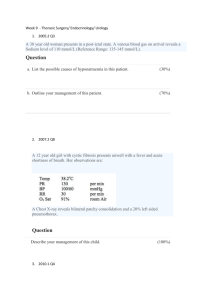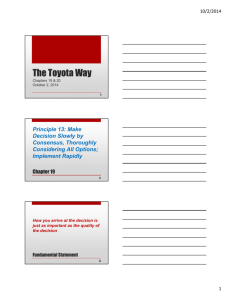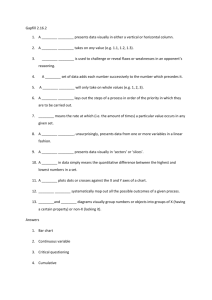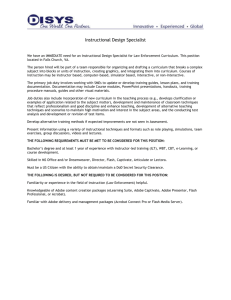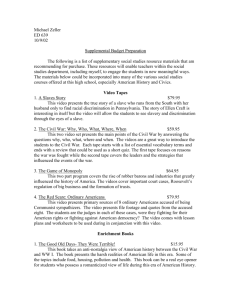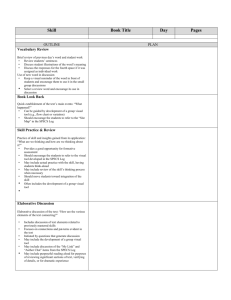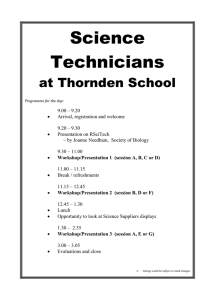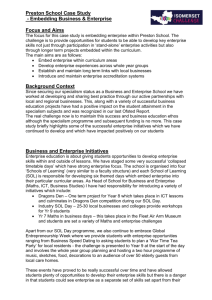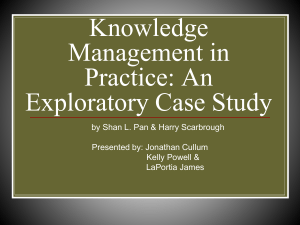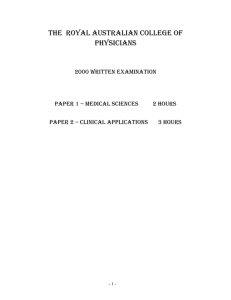INFO 630 Reading Materials
advertisement
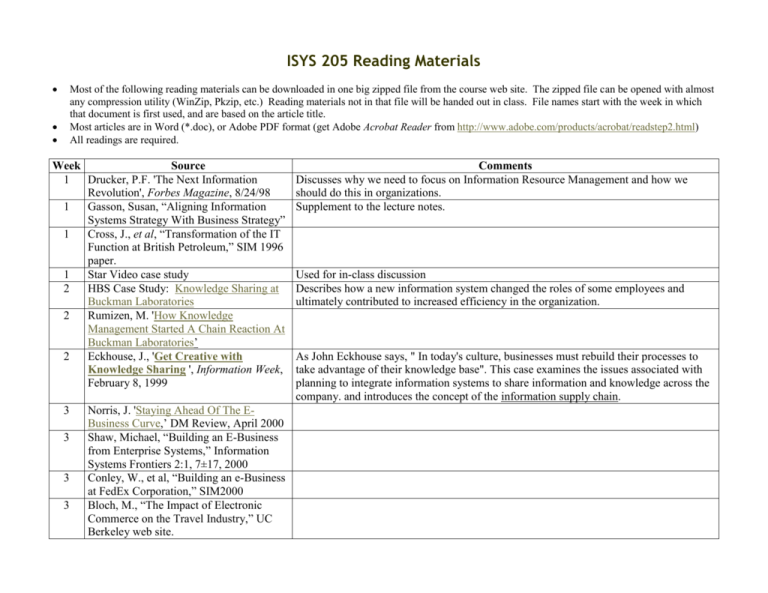
ISYS 205 Reading Materials Most of the following reading materials can be downloaded in one big zipped file from the course web site. The zipped file can be opened with almost any compression utility (WinZip, Pkzip, etc.) Reading materials not in that file will be handed out in class. File names start with the week in which that document is first used, and are based on the article title. Most articles are in Word (*.doc), or Adobe PDF format (get Adobe Acrobat Reader from http://www.adobe.com/products/acrobat/readstep2.html) All readings are required. Week Source 1 Drucker, P.F. 'The Next Information Revolution', Forbes Magazine, 8/24/98 1 Gasson, Susan, “Aligning Information Systems Strategy With Business Strategy” 1 Cross, J., et al, “Transformation of the IT Function at British Petroleum,” SIM 1996 paper. 1 Star Video case study 2 HBS Case Study: Knowledge Sharing at Buckman Laboratories 2 Rumizen, M. 'How Knowledge Management Started A Chain Reaction At Buckman Laboratories’ 2 Eckhouse, J., 'Get Creative with Knowledge Sharing ', Information Week, February 8, 1999 3 3 3 3 Norris, J. 'Staying Ahead Of The EBusiness Curve,’ DM Review, April 2000 Shaw, Michael, “Building an E-Business from Enterprise Systems,” Information Systems Frontiers 2:1, 7±17, 2000 Conley, W., et al, “Building an e-Business at FedEx Corporation,” SIM2000 Bloch, M., “The Impact of Electronic Commerce on the Travel Industry,” UC Berkeley web site. Comments Discusses why we need to focus on Information Resource Management and how we should do this in organizations. Supplement to the lecture notes. Used for in-class discussion Describes how a new information system changed the roles of some employees and ultimately contributed to increased efficiency in the organization. As John Eckhouse says, " In today's culture, businesses must rebuild their processes to take advantage of their knowledge base". This case examines the issues associated with planning to integrate information systems to share information and knowledge across the company. and introduces the concept of the information supply chain. Week Source 4* Davenport, T. (1998). “Putting the enterprise into the enterprise system.” Harvard Business Review, 76(4), 121-131. 4* Deutsch, C. (1998). “Software that can make a grown company cry.” New York Times, November 8, section 3, page 1. 4* Johnson, D. (1994). “Computer ethics.” Chapter 3 4 “Business reengineering at a large government agency” 4 Gasson, Susan, “Business Process Redesign” 4 Paper, D., “A Comprehensive Process Improvement Methodology: Experiences at Caterpillar's Mossville Engine Center (MEC)” 5 Moody, J., “The Training Challenge: Installing a POS for Improved Reporting and Customer Satisfaction” 5 “Mismanaging a Technology Project: The Case of ABC Inc.” 5 “The Clinical Information System: A Case of Misleading Design Decisions” 5* Comments Explains concepts of Enterprise Resource Planning and presents examples of successful and unsuccessful implementations of enterprise systems. Explains concepts of Enterprise Resource Planning and presents examples of successful and unsuccessful implementations of enterprise systems. Introduces the concept of professional ethics and presents several scenarios of ethical dilemmas for information systems professionals. Describes the analysis and redesign of existing processes, procedures, and workflows at one organization and demonstrates the problems of this type of initiative. Supplement to the lecture notes. Provides instruction in working with outside vendors and highlights the importance of training in the systems implementation process. Focuses on the requirements analysis phase of information systems development and presents stakeholder analysis as an alternative to the traditional approach used in this phase. Garrity, E., & Sanders, G. (1998). Chapter 1 presents definitions and examples of information systems success and failure. Information systems success measurement. Chapter 9 presents “five small secrets” to information systems success. Chapter 1 and Chapter 9 * these will be distributed in handouts, and do not appear in the zipped file of reading materials.
